00:49
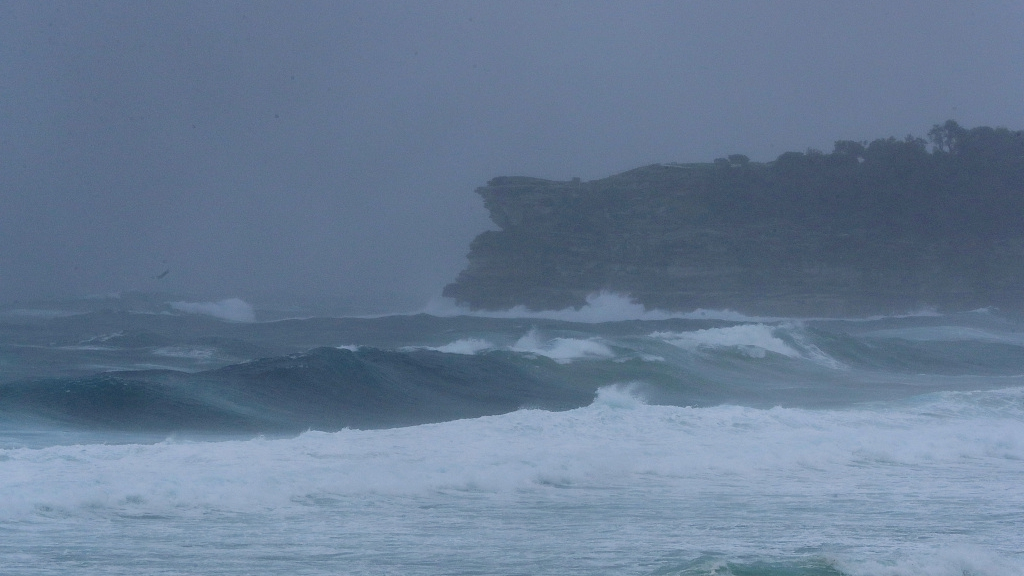
Days of torrential rains have led to flooding in the Australian states of New South Wales and Queensland, dampening raging fires that firefighters had battled in vain for months.
Australia's Bureau of Meteorology said 0.39 meters (15.41 inches) of rain fell in Sydney over the past few days. This is the highest record since February 1990, which was set to 0.41 meters (16.30 inches).
While several major bushfires have been extinguished by the deluge, including a "mega-blaze" that burned through 500,000 hectares north of Sydney and a similar-sized fire to the city's south, bringing relief to residents and firefighters, there are still about 24 fires burning.
"By the end of the week it's likely they will be out," New South Wales Rural Fire Service spokesman James Morris said.
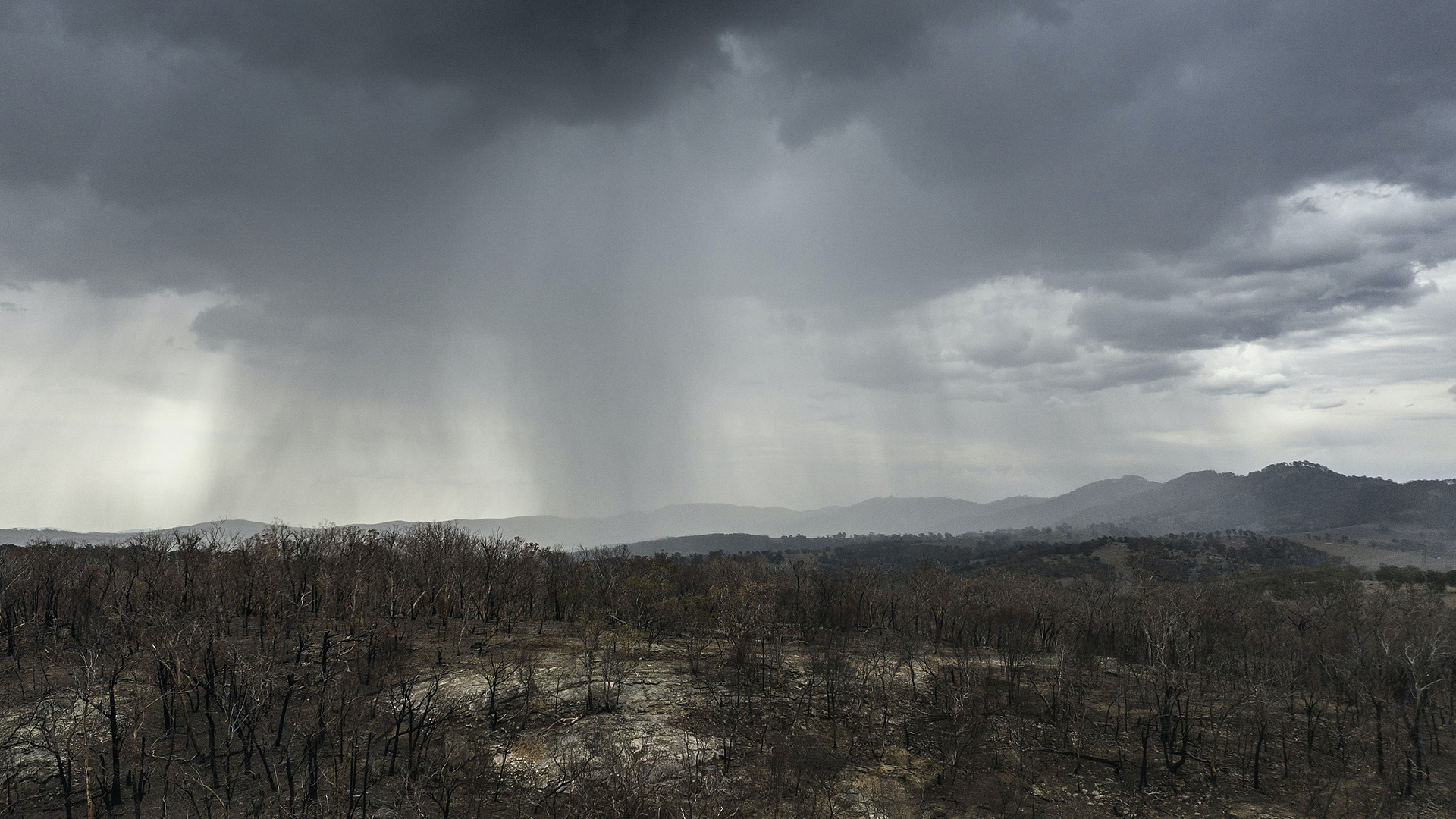
An aerial view as rain begins to fall on drought and fire-ravaged country near Tamworth ahead of predicted further wet weather across NSW and Victoria in Tamworth, Australia. /VCG Photo
An aerial view as rain begins to fall on drought and fire-ravaged country near Tamworth ahead of predicted further wet weather across NSW and Victoria in Tamworth, Australia. /VCG Photo
As the heavy rainfall quenches the drought-stricken areas in the east, NSW fire chief Shane Fitzsimmons warns that hotter and drier conditions were expected to return in the coming weeks. The state's bushfire season, which began in September 2019, could run until as late as April.
Besides the possible dry season coming afterwards, Australia is facing other challenges as it seesaws between extreme weather events.
Tropical cyclone Damien battered northwestern Australia's resource-rich Pilbara region on Sunday. The cyclone brought winds of 195 kph (121 mph) at its peak. It was weakening as it moved southeast through the sparsely populated central Pilbara, bringing winds of up to 100 kph (62 mph) and heavy rainfall that was expected to cause flooding. Although rain brought by cyclones are often welcome, these systems can also cause serious damage. The storm tore out trees and ripped roofs off sheds as it swept across the lands.

A spot fire burns near Bredbo, south of the Australian capital, Canberra, February 2, 2020. /AP Photo
A spot fire burns near Bredbo, south of the Australian capital, Canberra, February 2, 2020. /AP Photo
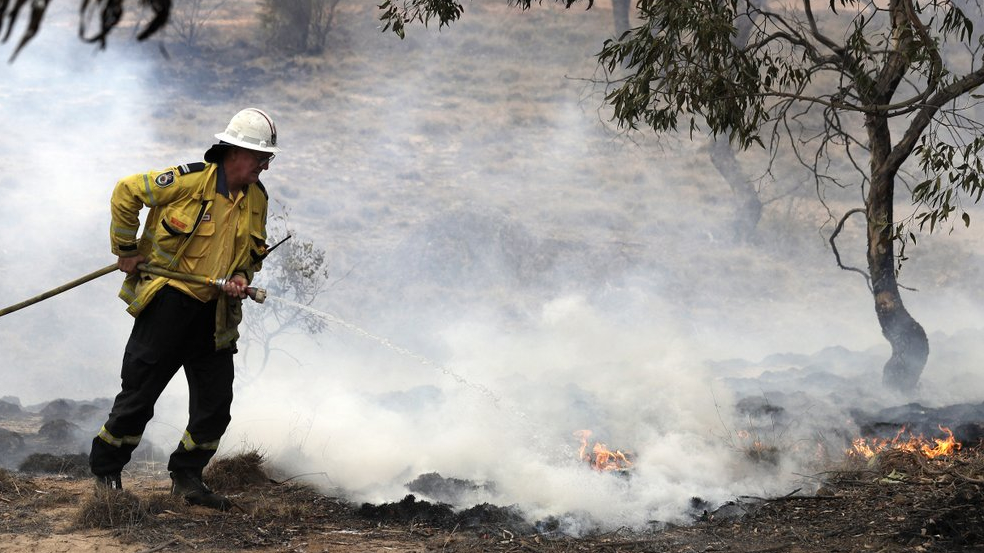
A firefighter controls a spot fire near Bredbo on February 2, 2020. The threat is posed by a blaze on Canberra's southern fringe that has razed more than 21,500 hectares since it was sparked by heat from a military helicopter landing light. /AP Photo
A firefighter controls a spot fire near Bredbo on February 2, 2020. The threat is posed by a blaze on Canberra's southern fringe that has razed more than 21,500 hectares since it was sparked by heat from a military helicopter landing light. /AP Photo
The risk of heatwaves in southern Australia usually peaks around the middle to the end of summer. As Fitzsimmons warns, the possibility of other extreme weather events still remains. In the five-month long bushfire crisis, blazes have killed at least 33 people and destroyed thousands of homes. Around 1.25 billion animals have been killed in the blazes across Australia, including thousands of koalas and other iconic species such as kangaroos, wallabies, kookaburras, cockatoos and honeyeaters.
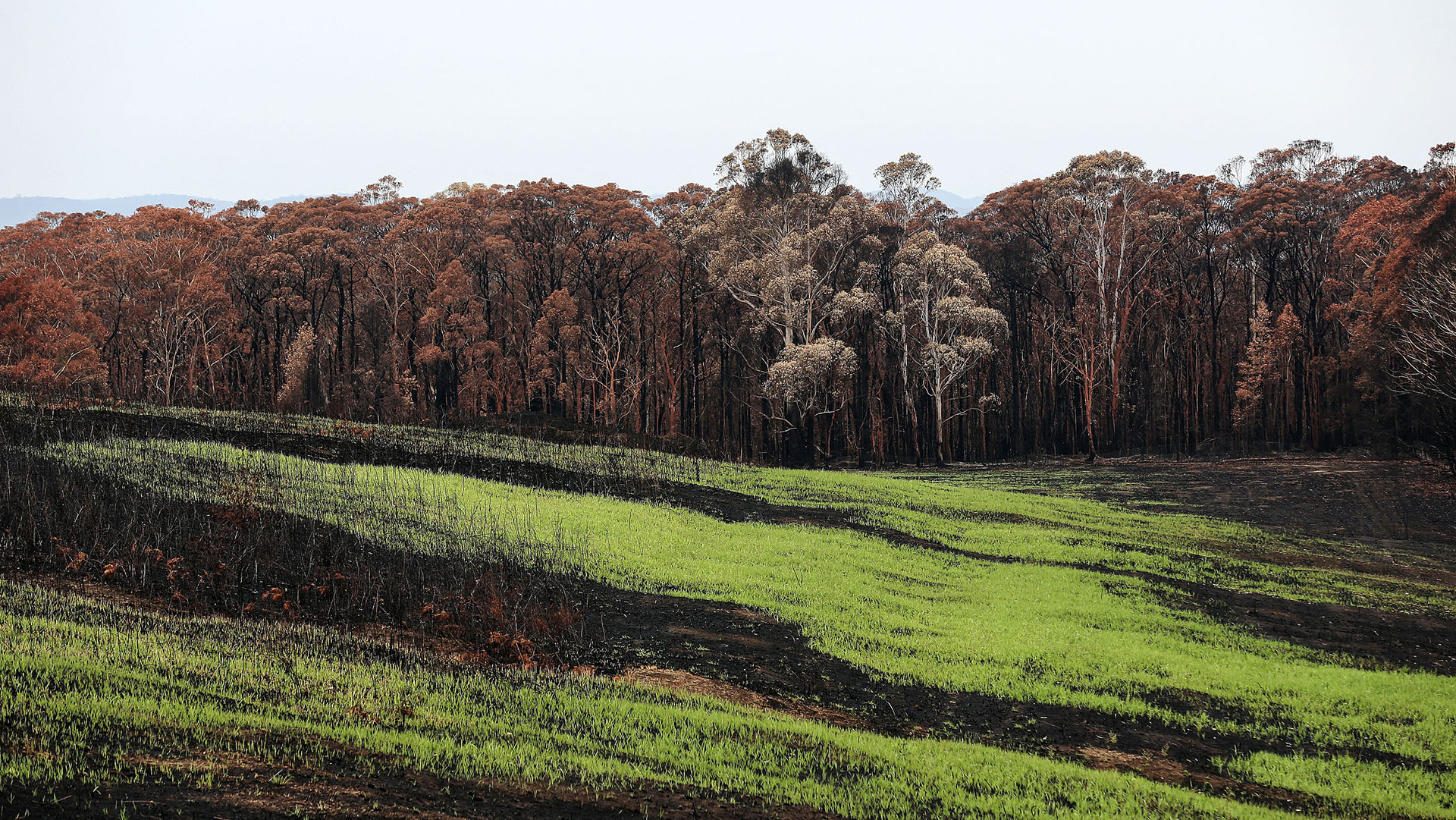
Grass sprouting in Bilpin, New South Wales, Australia. /VCG Photo
Grass sprouting in Bilpin, New South Wales, Australia. /VCG Photo
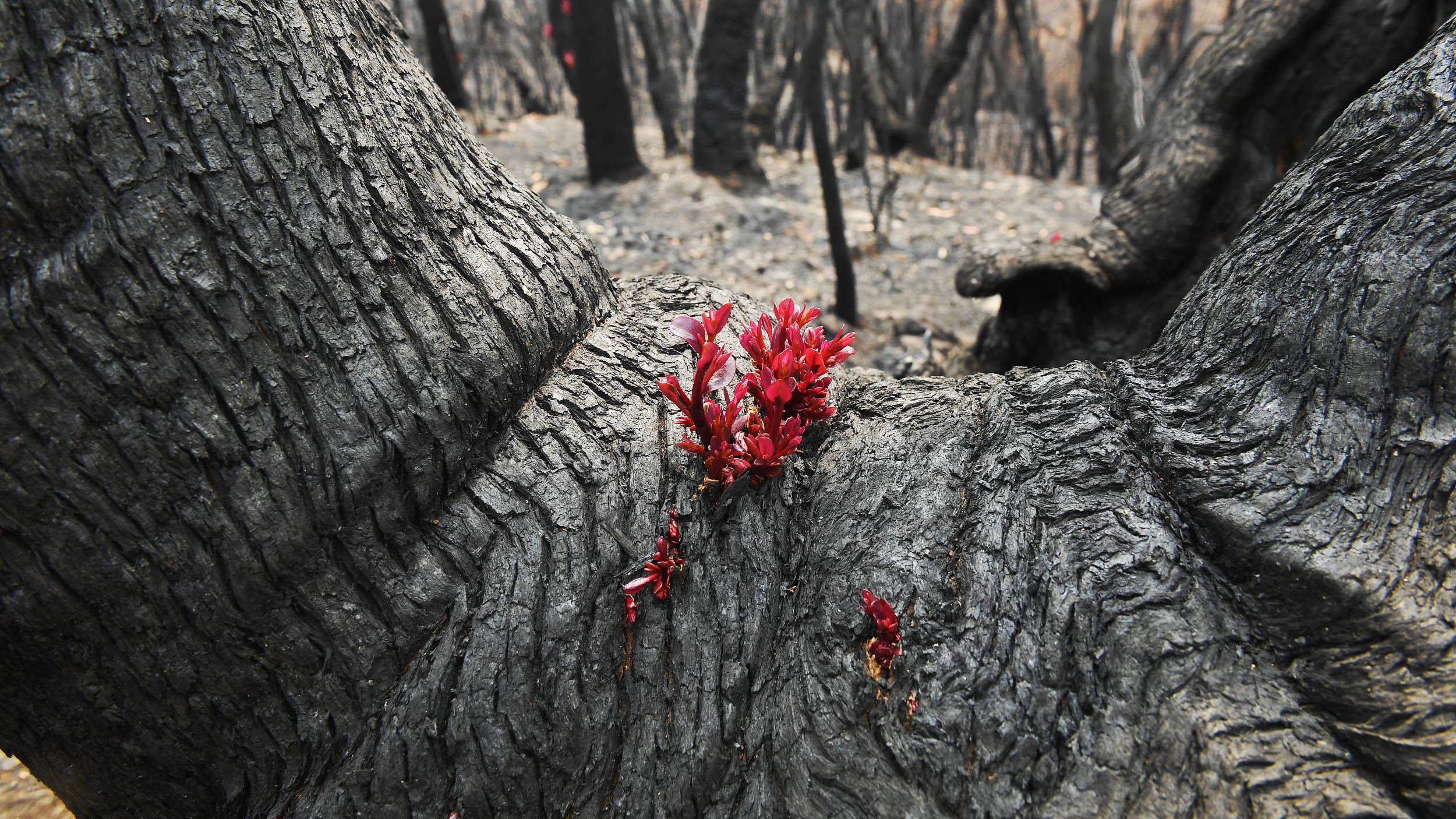
Shoots emerge from an eucalyptus tree in Mount Tomah in the Blue Mountains of New South Wales. /VCG Photo
Shoots emerge from an eucalyptus tree in Mount Tomah in the Blue Mountains of New South Wales. /VCG Photo
Patches of fresh green brings hope for the rejuvenation of the forests in Australia amid months of dreadful news. In many once-scorched lands of NSW, plants are beginning to sprout after the extinguishing of the fire. Mother Nature has once again amazed humans with her strikingly tough vitality.
(If you want to contribute and have specific expertise, please contact us at nature@cgtn.com.)